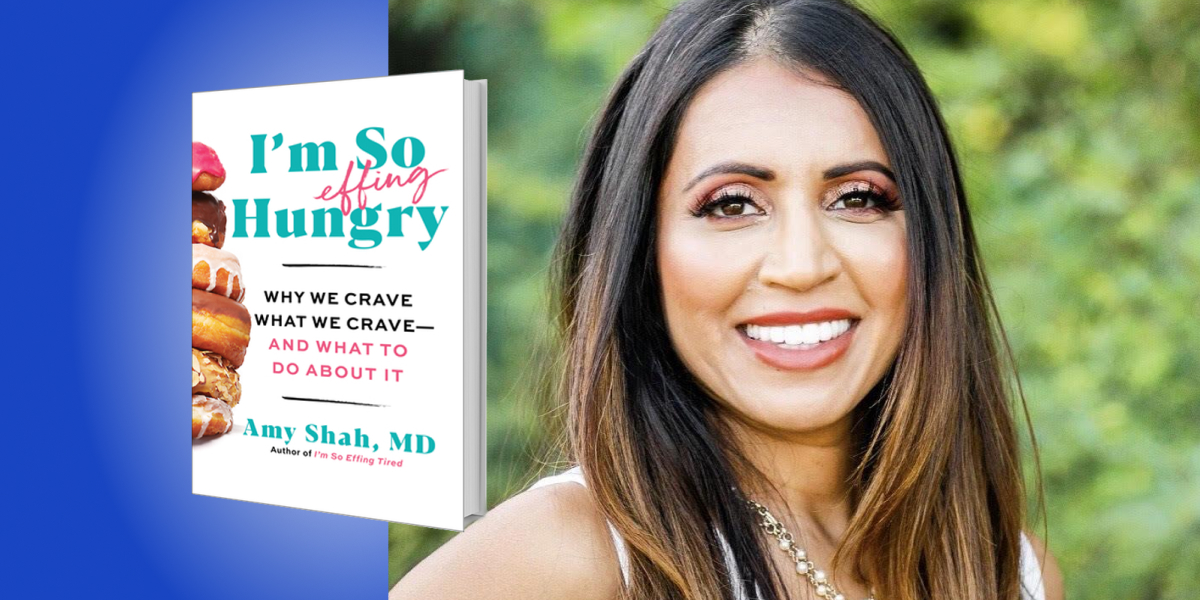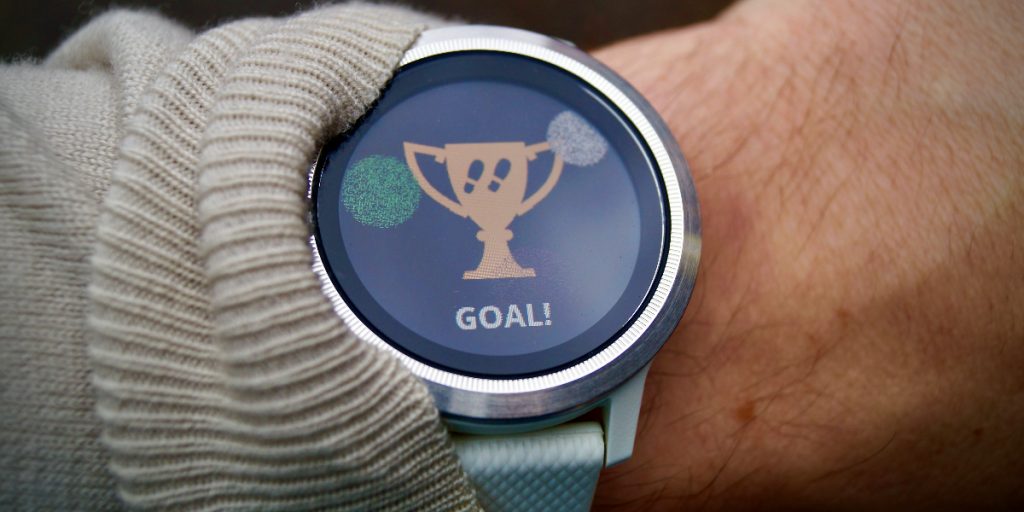Dr. Amy Shah is an MD specialist in Allergy & Immunology and Internal Medicine. She pursued her medical training at Columbia University Medical Center, Beth Israel Deaconness/Harvard Medical School, Albert Einstein College of Medicine, and Cornell University.
Below, Amy shares 5 key insights from her new book, I’m So Effing Hungry: Why We Crave What We Crave and What to Do About It. Listen to the audio version—read by Amy herself—in the Next Big Idea App.

1. Our cravings drive our behavior.
Gut-brain connection is something that is so new to people. It’s a big paradigm change. We always think that we eat what we feel like eating, and it has little effect except for the calories that we consume. But food is information for your gut bacteria. And your gut bacteria, along with your immune system and all of the neurochemicals there, will determine your cravings, how inflamed you are, and your mood. Our cravings drive our behavior.
As an Indian immigrant, I came to the U.S. with my parents when I was five years old. A few years into settling in the U.S., we got very bad news. My father, along with his five brothers and my grandmother, all had been diagnosed with type two diabetes. This was a devastating diagnosis at the time.
We didn’t know anything about the disease except that it had taken my grandfather’s life not too long before. Almost everyone in our family had this devastating disease. We didn’t know how to control it. We didn’t know how to change our diet in a way that could control our cravings because even though my dad knew that he couldn’t eat sugar, he craved sugar. After coming to the U.S. and being very busy trying to keep up two jobs, he had switched to a highly processed food diet along with soda. He knew that it was going to be very difficult to stop doing that because every time he would try, he would go back to consuming sugary food.
“Over 50 percent of dopamine comes from our gut and it keeps us motivated to do the things we crave.”
This really distressed me because I knew that I was in for a future of inflammation and cravings, as well as this devastating disease, diabetes. At the time, I thought, “Well, there’s nothing I can do about it.” But I started to research why we crave what we crave. I attended nutrition school, then medical school. I trained at the best places in the country for nutrition and then for internal medicine, immunology, and allergy. All this to say that in the end, I still didn’t really understand how food was affecting the body. I started to do some experimentation myself, and really looking into the research.
What struck me is that our cravings drive so much of our behavior. Dopamine is a neurochemical that’s mostly made in the gut. Over 50 percent of dopamine comes from our gut and it keeps us motivated to do the things we crave. It keeps us motivated to eat the things that we want to eat. But this is something we can retrain. Dopamine is something we can increase or decrease based on our diet and our actions. In essence, if you can control your cravings, you can be more satisfied, you can be happier, and you can drive your own behavior.
2. It’s really about survival of the fittest bacteria.
Gut bacteria have the ability to hijack our brain. They literally are stronger than our own human body signals. What do I mean by that? If your gut bacteria are craving something, they will create peptides that look exactly like our craving signals, except stronger. They overtake our own craving signals. They also make dopamine and serotonin, which are happiness chemicals. These chemicals are stronger than our own endogenous dopamine and serotonin. So if you want to be the fittest human, you want to have the fittest bacteria.
3. It only takes three days to change your microbiome.
We know that the microbiome has power to control our cravings, to make us happier, to make better decisions. What we didn’t realize until recently, however, is that it takes only three days to start to see marked changes in the microbiome.
“We want both diversity in our microbiome and we want higher numbers.”
A 2014 landmark study asked patients to make a large, rapid change to their diet—from a highly processed meat-based diet to a highly unprocessed vegetable-based diet. Then they observed them for two weeks. What they found is it took only three days to see a marked change in the various types of bacteria and the number of bacteria. Therefore, we want both diversity in our microbiome and we want higher numbers, and that can start to happen within three days.
We want to change our cravings. We want to change our happiness. We want to change our inflammation levels. The power is in our hands and we can do it through diet.
4. The best probiotic we can take is exercise.
The best probiotic is exercise, especially a sunny walk. A walk outdoors has a magical effect on our gut bacteria, our hormones, and our mood. Gut bacteria create a compound called short chain fatty acids in response to exercise, especially nature-based exercise. They send these anti-inflammatory signals to the brain, and around the entire body, to calm down inflammation, improve mood, and make you more satisfied.
This is a way for us to get control of our cravings. Exercise is one of the best tools we have. It’s better than any pill probiotic you can buy. Putting on your sneakers and going for a sunny walk is one of the best things you can do for your gut bacteria.
“[Exercise] is better than any pill probiotic you can buy.”
We can use exercise in different ways, but the simplest way is just to go outside and get time in nature. Our gut bacteria have circadian rhythms, so they get input from our body when we are in nature, and when we’re moving. This has great effects on our mood, our cravings, and our behavior.
5. Psychobiotics are the new frontier in medicine.
Psychobiotics are bacteria that can change the entire mental state of a person. Researchers took patients with schizophrenia, looked at their microbiome, and observed distinct differences. In fact, the researchers could tell which patients had schizophrenia just by looking at their microbiome. They next took this microbiome and transplanted it into germ-free mice. They also took non-schizophrenic gut bacteria and put it into other germ-free mice. They then mixed all the mice up and found that the mice that had received the schizophrenic bacteria started to display mice schizophrenia. The gut researchers knew which animals had received that bacteria because of their behavior.
We can transplant behavior, we can transplant mood, and we can transplant cravings just by changing the gut microbiome. This is the new wave of the future. We can cure disease, mental health, and physical health by changing our gut because our gut bacteria communicate with our immune system, hormones, and nervous system, creating change throughout our body.
To listen to the audio version read by author Amy Shah, download the Next Big Idea App today:































